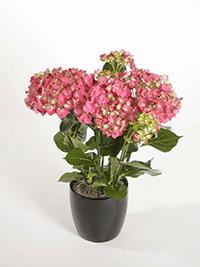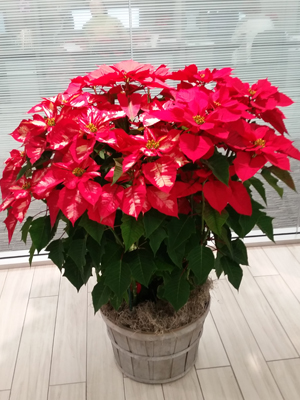Common Name: Flowering plants
Light Needs
Low to high light
Water Requirements
Blooming plants require extra water
Description:
Flowering plants come in all shapes and sizes. Blooms range in colors.
Most commonly used varieties: Azalea, Begonias, Chrysanthemum, Hydrangea, Kalanchoe, Lilies and Poinsettias
Flowering plants come in all shapes and sizes. Blooms range in colors, making these important color elements within the interiorscape. Considered a perishable product, potted flowers have a definite shelf life and need to be replaced when the blooms fade.
Certain plants (poinsettias and hydrangeas) or plants going into low light conditions should be in full bloom at time of installation. Rotate pot to expose all sides to the available light source.
Most plants in bloom require extra water because they are actively growing. In general, water flowering plants thoroughly. In lower light conditions (50fc – 150fc), allow the top half-inch of media to dry; in higher light conditions, keep media evenly moist. Overwatered plants often drop flowers and brown/yellowish leaves. In addition, they will develop stem and root rot. Underwatered plants’ flowers will wilt, the foliage turns crispy brown and drops and stems wither and die.
Most flowering plants used indoors are for short-term installations. To keep the flowers looking beautiful as long as possible, do not let media dry out. To regulate moisture levels, use sub-irrigation or add water-absorbing polymers. Raise humidity levels, if possible. Pick off spent blooms. Rotate plants frequently. Keep pest free. Remove blooms after they peak and fade to allow unopened buds to open. Prune out wilted, brown foliage and leggy, elongated stems.
Aphids, thrips, scale, mealybug, whitefly, stem and root rots.



